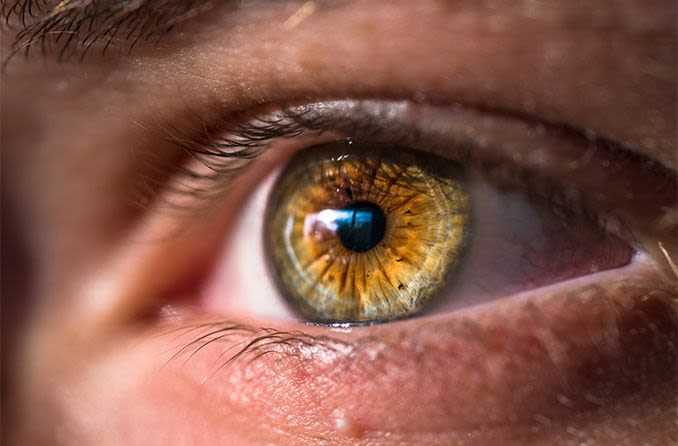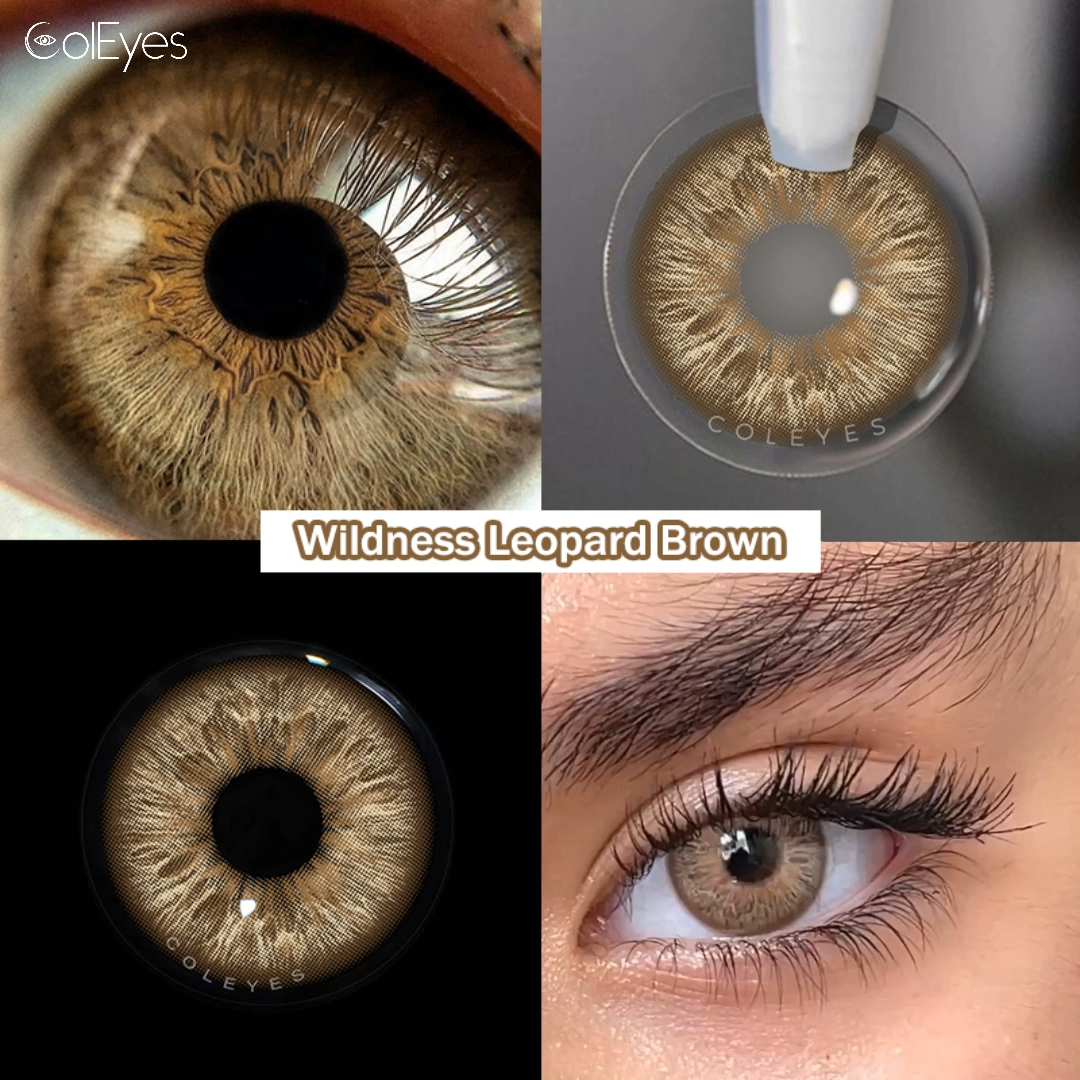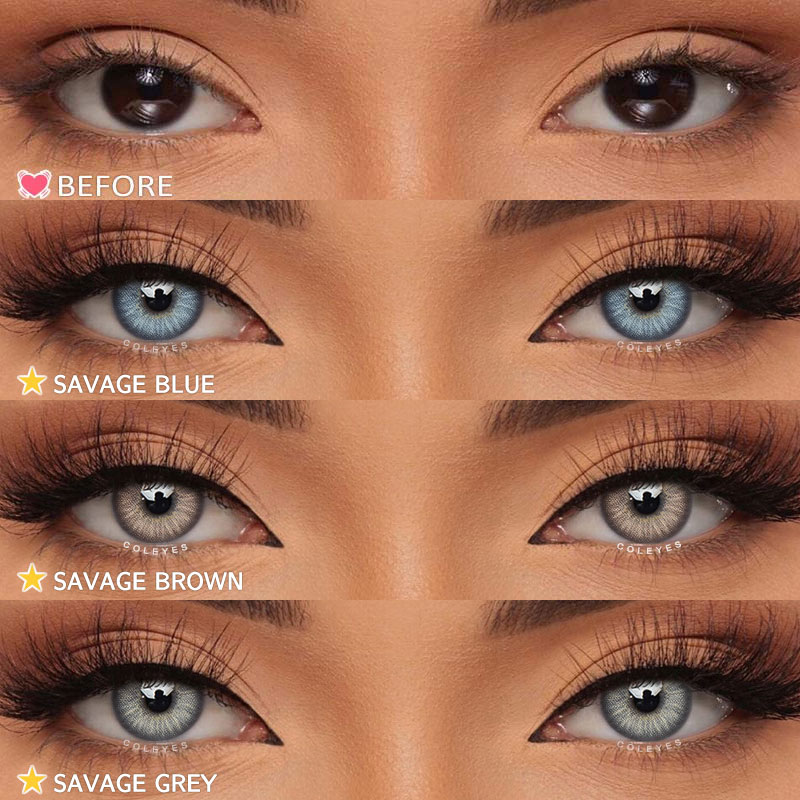Hazel Eyes: Understanding Their Unique Charm and Color Variations
Jan 23,2024 | Coleyes
Embarking on a journey into the captivating world of hazel eyes, one can’t help but marvel at the intriguing blend of hues that make them so unique. A rare jewel in the world of eye colors, hazel eyes are rich with mystery, changing their appearance with the light and reflecting an enchanting mix of brown, gold, and green hues. But what exactly makes hazel eyes so unique?
In this exploration, we delve into the mesmerizing world of hazel eyes, unraveling their color variations, understanding the science behind their formation, and learning how to highlight their unique charm. We will journey through the genetics and melanin distribution that gives rise to this unique eye color, discuss the health implications associated with it, and even provide tips to amplify its allure through eyewear and makeup.
-
Hazel eyes are characterized by a unique blend of colors, often creating an enigma of hues.
-
The color combination in hazel eyes is due to complex genetic interactions involving up to 16 different genes and melanin distribution.
-
By selecting the right eyewear and makeup, hazel eyes can be made to stand out for a captivating look inspired by celebrities with this eye color.
The Enigma of Hazel Eyes: A Blend of Hues

Hazel eye color is truly a sight to behold, characterized by an intriguing blend of colors that can include light brown, green, and traces of gold, blue, or grey. Unlike brown eyes that are dominated by a single color or blue and green eyes that exhibit a clear hue, hazel colored eyes present a captivating mosaic of colors. The entire iris - the colored part of the eye - can exhibit a contrast of colors, with brown or gold flecks adding to their unique charm.
The captivating charm of hazel eyes is further accentuated by the influence of light. The presence of multiple colors, attributed to the uneven distribution of melanin in the iris, results in a fascinating interplay of light and color. As a result, people with hazel eyes often appear to have eyes that change color depending on the lighting conditions. However, it’s important to note that hazel eyes do not physically change color - the perceived color change is merely an illusion created by the unique distribution of colors within the iris.
Shades Within the Spectrum
The spectrum of hazel eyes is as diverse as it is captivating. The unique combination of colors can produce shades of:
-
brown
-
green
-
gold
-
blue
-
grey
giving each pair of hazel eyes a unique appearance. From a distance, hazel eyes might appear to have a solid green color or a light brown hue, but a closer look reveals a complex pattern of colors that sets them apart from other eye colors.
The distinctive combinations of colors in hazel eyes make them unique from one individual to another. Some individuals may have:
-
Grey flecks
-
Tones of brown
-
Tones of green
-
Tones of gold
-
Tones of blue
This results in a distinct appearance, often referred to as the ‘sunburst’ effect, which contributes to the distinctive charm associated with hazel eyes.
The ‘sunburst’ effect is characterized by a gradient of color that is typically visible in hazel eyes, particularly around the pupil and extending outwards across the iris.
The Influence of Lighting
The colors in hazel eyes are not static. They can appear to change depending on the lighting conditions, clothing color, and even the surrounding environment. This often leads to the misconception that hazel eyes can change color, which, in reality, is not the case. What changes is the perception of their color, creating the illusion of color change.
Both natural and artificial light can significantly influence the way the colors within hazel eyes are perceived. For instance, under natural sunlight, hazel eyes may exhibit a green or golden-brown tint, while artificial lights can either lighten or darken the range of pigments in hazel eyes. Depending on the lighting conditions, particular hues can be accentuated or subdued, influencing the perceived color of the eyes.
The Science Behind the Color: Genetics and Melanin
The captivating hues of hazel eyes are not just a matter of aesthetic delight; they also offer a fascinating insight into human genetics. Behind the alluring colors and patterns of hazel eyes lies a complex interplay of genetics and the distribution of melanin within the iris. But what is melanin and how does it determine eye color?
Melanin is a natural pigment present in the human body and plays a pivotal role in determining the color of the eyes, skin, and hair. In the context of eye color, the amount of melanin in the iris and its composition are the determining factors. Hazel eyes, in particular, are influenced by a specific combination of genetics and the distribution of melanin within the iris. The pigmentation and melanin distribution patterns result in hazel eyes displaying a blend of brown, green, and gold hues, rather than a solid green or brown color.
So, the unique color combination in hazel eyes is actually a result of a complex genetic interaction, including the hazel eye genetic mutation. The interplay of up to 16 different genes can influence eye color, making it a highly unpredictable trait. The genes HERC2 and OCA2 play significant roles in this process, with HERC2 regulating the activity of the OCA2 gene. When active, OCA2 can result in more melanin production and hence darker eyes. This explains why even two blue-eyed parents can have a child with hazel eyes.
Unraveling the Genetic Tapestry
The genetics of eye color is a complex tapestry of interactions between multiple genes. While the genes HERC2 and OCA2 play significant roles, up to 16 different genes can influence eye color, making it a highly unpredictable trait. This complex genetic interplay is a key reason why hazel eyes are relatively rare.
It is entirely feasible for parents to have offspring with an eye color that does not match either of their own. For example, it is possible for two blue-eyed parents to have a child with hazel eyes due to the complex genetic interactions. This diversity and unpredictability of eye color is one of the many wonders of human genetics.
Melanin's Role in Eye Color
Melanin, the pigment that gives color to our skin, hair, and eyes, plays a crucial role in determining eye color. The unique color combination in hazel eyes can be attributed to a specific genetic mutation, resulting in a unique distribution of melanin.
Light colored eyes are characterized by a higher presence of pheomelanin, while darker eyes exhibit a greater concentration of eumelanin. This variation in melanin types can result in children having different eye colors than their parents.
Melanin is predominantly concentrated in the posterior layer of the iris in hazel eyes, and occasionally, a portion of the pigment may also be present in the anterior layer of the iris. This uneven distribution of melanin contributes to the distinctive color combinations that are typical of hazel eyes.
Comparing Eye Colors: Hazel, Brown, and Green
Hazel eyes, with their distinctive blend of hues, stand apart from other eye colors. Yet, they share some similarities with both brown and green eyes. All three eye colors contain varying amounts of the pigment melanin. However, the distribution and concentration of melanin in these eye colors differ, leading to unique color patterns and hues.
Brown or hazel eyes are often admired for their unique and captivating colors. Brown eyes, the most common eye color worldwide, are characterized by a high concentration of melanin in the iris, resulting in dark brown eyes. Hazel eyes also contain brown pigmentation but are distinguished by the presence of additional colors like green and gold. These colors may appear as flecks or as a gradient from the center of the iris to the outer edges, adding to the unique charm of hazel eyes.
Green eyes, on the other hand, contain less melanin than brown eyes but more than blue eyes. The green color is a result of a phenomenon called Rayleigh scattering, where shorter wavelengths of light are scattered more, making the eyes appear green. However, hazel eyes differ from green eyes in their color pattern and the presence of additional colors such as brown and gold.
The Dynamic Duo: Hazel and Brown Eyes

Hazel and brown eyes both belong to the brown color family due to the presence of brown pigmentation. However, unlike brown eyes, which are mostly uniform in color, hazel eyes exhibit a mix of colors, including green and gold. This mix of colors, along with the presence of color gradients and flecks, sets hazel eyes apart from brown eyes.
The distinct appearance of hazel eyes is due to the unique distribution and concentration of melanin in the iris. While brown eyes have a high concentration of melanin, resulting in a dark brown color, hazel eyes have a more varied distribution of melanin. This results in a mix of colors, including:
-
Brown
-
Green
-
Gold
-
Flecks of blue or amber
These various colors add to the unique charm of hazel eyes.
The Contrast: Hazel and Green Eyes
Hazel and green eyes share some similarities, particularly the presence of green hues. However, they differ in the amount and placement of melanin, resulting in distinct color patterns and hues. Green eyes typically display a uniform green hue without the color variations that are characteristic of hazel green eyes.
Hazel eyes contain more melanin than green eyes, and this melanin is distributed unevenly in the iris. This uneven distribution results in a range of green, brown, and gold shades, giving hazel eyes their unique appearance. In contrast, green eyes display a uniform green hue, often with tones of emerald, jade, and moss, which are not commonly observed in hazel eyes.
Rarity and Distribution: Who Has Hazel Eyes?

Rare are hazel eyes, as approximately 5% of the world’s population has them, making this unique eye color relatively scarce. Not as common as brown, blue, or green, the rarity of hazel eyes adds to their allure and mystique. Despite being less common than brown or blue eyes, hazel eyes are found in diverse populations across the world.
Hazel eyes are most commonly found in people of the following backgrounds:
-
Brazilian
-
Middle Eastern
-
North African
-
Spanish
This eye color is prevalent in these ethnic groups. Interestingly, about 18% of the American population also possesses hazel eyes. This shows that while hazel eyes are relatively rare, they are spread across diverse populations and ethnic groups.
Health Implications for Lighter Eyes
Eye color is not just a matter of aesthetics; it can also have implications for eye health. Lighter eyes, including hazel eyes, are often more sensitive to sunlight and blue light due to the lower levels of melanin. As melanin helps protect the eyes from the harmful effects of UV rays, individuals with lighter eyes, such as hazel eyes, may be at a higher risk of certain eye conditions.
People with light eyes should take certain precautions to protect their eyes from sunlight exposure. This includes wearing sunglasses with high UV protection, using anti-glare lenses, and taking breaks from exposure to intense light. Lighter eyes may be more susceptible to certain eye conditions due to their lower melanin levels, such as ocular melanoma.
Therefore, regular eye check-ups are crucial for maintaining eye health.
Fashioning Your Look: Eyewear and Makeup for Hazel Eyes
Fashion and style can significantly enhance the natural beauty of hazel eyes. The right eyewear and makeup can complement the unique color variations of hazel eyes, making them stand out even more. Whether you are preparing for a special occasion or simply want to highlight your daily look, here are some tips to make your hazel eyes pop.
The choice of eyewear plays a significant role in enhancing the allure of hazel eyes. Frames in gold, brown, green, or earthy tones can complement the various hues in hazel eyes, making them stand out. On the other hand, the right makeup can further accentuate the beauty of hazel eyes. Shades of emerald or olive can emphasize the green hues in hazel eyes, while pink, berry, or purple shades can create an unexpected contrast.
Selecting Spectacles
The correct choice of eyewear can accentuate the beauty of your hazel eyes. Frames in colors that complement the various hues in your eyes can enhance their natural beauty. For instance, gold frames can accentuate the gold hues, while brown frames can complement and contrast the green and gold tones in your eyes.
Green frames can also have a favorable effect on hazel eyes. When paired with colors such as purple or pink, they can notably accentuate the green, gold, and brown tones in hazel eyes. So, the next time you’re selecting spectacles, consider frames in:
-
gold
-
brown
-
green
-
earthy tones
to complement your hazel eyes and make them stand out.
Makeup Magic
Makeup can work like magic to enhance the unique charm of hazel eyes. The right shades can bring out the various hues in your eyes, making them pop. For instance, emerald-colored makeup can intensify the green tones in hazel eyes, while copper shades can complement the golden flecks, adding depth and vibrancy to the eyes.
Bronze makeup shades are also suggested for hazel eyes as they can enhance the golden specks and warmth in the eyes. This accentuates the brown and green tones, creating a radiant and captivating look. On the other hand, pink makeup can enhance the yellow flecks in hazel eyes, creating a pleasing contrast. So, whether you prefer a bold or a subtle look, the right makeup can make your hazel eyes stand out.
Temporary Transformation: Experimenting with Colored Contacts

Colored contacts offer an exciting way to experiment with different eye colors, including hazel. They can temporarily change your eye color, allowing you to experiment with different looks. However, it’s important to remember that colored contacts are not just fashion accessories but also medical devices that should be used with caution.
Before using colored contacts, you should consult an eye doctor and obtain a prescription. Non-prescription colored contacts are not permissible in the United States. Always ensure to use colored contacts safely and cautiously to avoid potential problems and maintain your eye health.
Icons with Hazel Eyes: Celebrity Inspirations
Several celebrities have been blessed with the captivating charm of hazel eyes. These icons have leveraged their unique eye color to enhance their distinctive appearances. Some celebrities with hazel eyes include:
-
Lady Gaga
-
Rihanna
-
David Beckham
-
Ryan Reynolds
They have all showcased the allure of hazel eyes.
Among these icons, Demi Moore, Sarah Hyland, and Darren Criss stand out for their mesmerizing hazel eyes. Their masterful use of makeup and eyewear has often highlighted the unique charm of their eyes, serving as a source of inspiration for those looking to accentuate their own hazel eyes. These celebrities are a testament to the captivating beauty of hazel eyes and how they can be enhanced with the right style and fashion choices.
Sum up
Hazel eyes, with their unique blend of brown, green, and gold hues, are a captivating sight. Their allure lies not only in their rare beauty but also in the fascinating science that determines their color. The blend of hues in hazel eyes is a result of complex genetic interactions and the distribution of melanin within the iris. While they share some similarities with both brown and green eyes, their unique color variations set them apart.
Whether you are blessed with hazel eyes or know someone who is, understanding the science behind this unique eye color can deepen your appreciation for it. And with the right eyewear and makeup, you can enhance the natural beauty of hazel eyes, making them stand out even more. Remember, whether you’re choosing glasses frames or experimenting with colored contacts, always prioritize your eye health. After all, the eyes are not just the windows to the soul, but also a testament to the fascinating complexity of human genetics and the beauty of diversity.
Frequently Asked Questions
What qualifies eyes as Hazel?
Hazel eyes are typically a blend of brown, green and gold, with potential glimpses of blue or amber. They often have a distinct hue around the pupil as opposed to the outer rim, giving them a "sunburst" effect.
Are hazel eyes rare?
Hazel eyes are quite rare, with only around 5% of the global population possessing them. This makes them much less common than blue or brown eyes, which account for 8 to 10% and 79%, respectively. Additionally, hazel eyes are not becoming more rare due to intricate genetic factors involved in their development.
What is special about hazel eyes?
Hazel eyes are thought to have a complex and varied color, often appearing to change in different lighting. They are also considered expressive and associated with spontaneity, enjoyment, and adventure.
What is the rarest eye color?
Green is the rarest eye color, according to the American Academy of Ophthalmology. Only two percent of the global population has green eyes, and it is also the rarest eye color in America.
Why do hazel eyes appear to change color?
Hazel eyes appear to change color due to the unique distribution of colors within the iris and the influence of lighting conditions, creating an optical illusion.

.jpeg?w=650&h=488)

